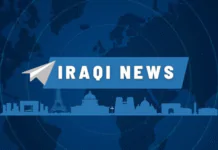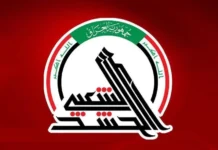Crypto Week Is Here — What Does It Mean for Stablecoin Regulation?
July 14–18: A Legislative Turning Point for U.S. Digital Assets
The U.S. House will vote from July 14 to 18 on three major crypto bills
The GENIUS stablecoin bill is expected to reach President Trump’s desk by July 18 with bipartisan support
New regulations promise clarity for crypto—but Moody’s questions widespread adoption
The U.S. House of Representatives is preparing to vote on three major pieces of legislation next week that could define the future of digital asset regulation in the United States.
While it may be early to declare victory, all indications suggest that a stablecoin measure could be signed into law by August—a long-standing goal of the Trump administration since February.
Crypto companies have long sought clear regulatory guidance that supports innovation. After years of opposing unfavorable proposals and investing millions into pro-crypto lobbying efforts, the industry may finally see those investments pay off.
Crypto Week: July 14–18
Lawmakers have designated the week of July 14 as “Crypto Week,” with a focus on three high-profile bills:
- The Digital Asset Market Clarity Act of 2025 (Clarity Act)
- The GENIUS Act (Guiding and Establishing National Innovation for U.S. Stablecoins)
- The Anti-CBDC Surveillance Act
Initially expected to be bundled together, the GENIUS and Clarity Acts will now receive separate votes. The House Rules Committee is scheduled to review each bill on Monday at 4:00 p.m. ET, with strong bipartisan passage likely.
- The Clarity Act outlines regulatory responsibilities for the SEC and CFTC. It passed the House Agriculture Committee by a 47–6 vote and the Financial Services Committee by 32–19, indicating strong momentum.
- The GENIUS Act would establish the first comprehensive federal framework for stablecoins. Already approved by the Senate, its passage in the House would send it directly to President Trump, likely by Friday, July 18, or the following Monday.
- The Anti-CBDC Act seeks to ban the issuance of a U.S. central bank digital currency. A similar version cleared the House in 2024.
Implications for Stablecoins
If these bills become law, it would mark a significant shift in how stablecoins are treated under U.S. financial law. However, regulatory implementation could take time, as detailed rules would need to be developed and adopted by both agencies and businesses.
A recent Moody’s Ratings report noted that while the GENIUS Act could impact the banking system, stablecoins must offer real advantages over current payment systems to achieve widespread use. The report also cautioned that, without strong issuer incentives, adoption may remain limited.
Democratic Concerns: Conflicts of Interest
Not all lawmakers are aligned. Representatives Maxine Waters and Stephen Lynch have raised concerns over potential conflicts of interest tied to President Trump’s personal involvement in crypto.
Waters stated:
“These bills serve as a brazen stamp of approval for the blatant abuse of power we’re witnessing in real time.”
As Crypto Week approaches, ***the next phase of U.S. crypto regulation may be decided in just days—***with stablecoins at the center of it all.
@ Newshounds News™
Source: Cryptopolitan
~~~~~~~~~
ISO 20022 Crypto List: XRP, ADA, and Stellar Ready for Fedwire Shift
Fedwire Adopts ISO 20022 Standard as Blockchain-Based Finance Enters the Mainstream
Fedwire adopts ISO 20022 on July 14, 2025
XRP, Cardano, and Stellar positioned to benefit
Could this be a trigger for a new wave of crypto adoption and price surges?
The U.S. Federal Reserve’s Fedwire system—responsible for trillions in real-time interbank settlements—will go live with the ISO 20022 messaging standard on July 14, 2025. This landmark upgrade sets the stage for a major transformation in global finance, with compliant cryptocurrencies like XRP, Cardano (ADA), and Stellar (XLM) poised to take center stage.
What Is ISO 20022—and Why Does It Matter for Crypto?
ISO 20022 is a new global standard for financial messaging that enables richer data, faster settlement, enhanced security, and better regulatory compliance. Already being adopted by major central banks and institutions worldwide, ISO 20022 forms the backbone of the next-gen financial infrastructure.
For crypto, this means that networks already aligned with the ISO standard may gain a first-mover advantage—especially as traditional financial players seek programmable and compliant blockchain settlement rails.
ISO 20022-Compliant Crypto Projects
CryptoPrimary Use CaseISO 20022 Ready?XRPCross-border banking, liquidity YesStellar (XLM)Stablecoin & fintech infrastructure YesCardano (ADA)Decentralized apps, scalability YesAlgorand (ALGO)Enterprise adoption, low fees YesQuant (QNT)Blockchain interoperability YesHedera (HBAR)Enterprise-grade DLT, speed Yes
XRP and Fedwire: A Natural Fit?
XRP has long been recognized for enabling near-instant cross-border payments. With Fedwire now ISO 20022 compliant, Ripple’s On-Demand Liquidity (ODL) platform becomes even more relevant.
Recent data suggests growing institutional interest:
- Spike in XRP wallet creation
- Increasing on-chain transaction volume
- Large financial institutions prepping for blockchain settlement trials
Should U.S. banks eventually explore XRP for Fedwire-compatible settlement, the impact on adoption and price could be dramatic.
Cardano (ADA) in the ISO 20022 Spotlight
Crypto analyst Dan Gambardello has flagged ADA as one of the few fully compliant blockchains under ISO 20022. With Hydra and Mithril scalability upgrades underway, and a new ADA/USD1 stable trading pair launching on Bitrue, liquidity and demand are rising.
According to market analysts:
- Ali Martinez forecasts a rally toward $0.90–$1.20
- Price action suggests a bullish breakout supported by increasing volume
Stellar, Algorand, Quant, and Hedera: Gaining Momentum
- Stellar (XLM): Low-fee payments and stablecoin issuance on a fintech-friendly chain
- Algorand (ALGO): Institutional-grade performance and CBDC trials with multiple central banks
- Quant (QNT): Bridges legacy banking systems with blockchain interoperability
- Hedera (HBAR): High-speed, secure enterprise network backed by Fortune 500 firms
What’s Next? Blockchain Meets Fedwire
With ISO 20022 officially live on Fedwire, the door is open for compliant crypto platforms to begin integrating into the heart of the global financial system.
Analysts predict:
- Accelerated institutional adoption of ISO-aligned cryptos
- Bank trials exploring blockchain settlement layers
- A new era of crypto-powered payments
Conclusion
The adoption of ISO 20022 by Fedwire is more than a messaging upgrade—it’s a structural shift toward a blockchain-integrated financial future. Projects like XRP, Cardano, and Stellar are not only compliant, they’re strategically positioned to benefit from this transformation.
If XRP or similar assets find their way into actual Fedwire settlement flows, the result could be explosive—both in usage and in price.
@ Newshounds News™
Source: Coinpedia
~~~~~~~~~
Asia’s Tokenization Boom Is Shifting Capital Away from the West
Japan, Hong Kong, and Dubai are driving real-world asset innovation with regulatory clarity and global investor appeal
Asia leads the tokenization race with proactive regulation
Japan, Hong Kong, and Dubai are drawing institutional capital
Tokenized bonds, ETFs, and real estate offerings are gaining momentum
Asia’s leadership in real-world asset (RWA) tokenization is redrawing the global financial map, as regulatory clarity across Japan, Hong Kong, and Dubai pulls capital away from the West, according to Maarten Henskens, Head of Protocol Growth at Startale Group.
“We’re seeing Western institutions set up Asia-Pacific operations not just to follow capital, but to participate in innovation,” Henskens told Cointelegraph. He highlighted that the region’s diverse yet complementary regulatory approaches are creating fertile ground for global investment and experimentation.
Japan: Regulatory Depth Builds Institutional Trust
Japan’s tokenization strategy is marked by careful and deliberate development, prioritizing institutional stability. Henskens pointed to MUFG’s security token infrastructure as a clear sign of how the ecosystem is maturing.
Under Japan’s Payment Services Act (PSA), stablecoins can hold up to 50% of reserves in low-risk government bonds and term deposits, balancing innovation with investor protection.
Hong Kong: Regulatory Agility Enables Fast Innovation
While Japan builds deep infrastructure, Hong Kong has launched the Ensemble Sandbox, a regulatory innovation hub designed to accelerate experimentation in digital assets.
“Japan is building long-term depth, while Hong Kong is showing how agility can bring experimentation to life,” said Henskens, suggesting the region offers both stability and speed—key ingredients for global investor confidence.
Tokenized Bonds and ETFs Fuel RWA Growth
Across Asia, the surge in tokenized bonds and exchange-traded funds (ETFs) is helping traditional investors access crypto-linked opportunities. In Japan, real estate security tokens are opening up previously exclusive markets to retail buyers, outperforming even traditional J-REITs in accessibility.
Tokenization is also simplifying fund administration and improving transparency. “This efficiency, paired with improved transparency, could make these products compelling to traditional investors who might not otherwise enter the crypto space,” Henskens noted.
He emphasized that cross-border interoperability will be the next major leap forward. “Seamless and compliant movement of tokenized assets across jurisdictions is essential for scaling adoption,” he said.
Dubai: A New Epicenter for Tokenized Real Estate
Dubai is fast emerging as another key Asian player in the tokenization landscape. The Virtual Asset Regulatory Authority (VARA) recently updated its frameworks to specifically support RWA tokenization.
According to attorney Irina Heaver, these updates provide a clear regulatory path for launching and trading tokenized real estate. In collaboration with VARA and major developers, the Dubai Land Department recently sold two tokenized apartments, with the offering selling out in minutes. Buyers hailed from over 35 countries, and 70% were first-time real estate investors in Dubai.
A Regional Network Effect Is Underway
“We’re already seeing a network effect,” Henskens said. “Innovation in one jurisdiction sparks progress in another. Different regions may optimize for different outcomes—and that’s a strength, not a liability.”
By building legal and technological bridges across borders, Asia’s tokenization leaders are not only transforming regional finance, but also reshaping global capital flows.
@ Newshounds News™
Source: Cointelegraph
~~~~~~~~~
Russia Begins Mega De-Dollarization Drive for BRICS
Russia has officially launched a mega de-dollarization drive aimed at helping the BRICS alliance move away from reliance on the Western financial system. In an interview with RT, Russian Finance Minister Anton Siluanov stated that the Kremlin could suspend transactions in the U.S. dollar at any moment.
Siluanov emphasized that Russia is actively working to make de-dollarization a central tenet of BRICS policy. He described the U.S. dollar as a “third-party currency” that should be avoided in cross-border trade and financial transactions.
Russia Pushes BRICS to Embrace National Currencies
Siluanov urged BRICS nations to conduct trade using their own national currencies, including the Russian ruble, Chinese yuan, Indian rupee, and South African rand. He argued that these currencies provide a viable alternative to the Western-dominated monetary system.
“Our BRICS de-dollarization drive would not involve Western financial infrastructure or settlement in currencies of those countries that imposed sanctions on Russia and would secure the New Development Bank from possible risks,” Siluanov stated.
The Minister added that Russia is prepared to suspend U.S. dollar trading as part of this initiative. He said Russian systems “have proven their reliability and independence from Western lending institutions that at any moment, as it turned out, can suspend payments.” Even if U.S. sanctions are lifted, Siluanov emphasized that the dollar would not return as the central reserve currency in Russia’s central bank.
Trade Deals Tied to De-Dollarization Commitment
Russia also plans to link new trade agreements within BRICS to the acceleration of de-dollarization. While China and Iran are expected to support the initiative, India, South Africa, and the UAE may hesitate due to their interest in maintaining U.S. dollar-denominated assets that bolster their GDPs and economic growth strategies.
This move underscores Russia’s ambition to solidify an independent financial architecture for BRICS and reduce systemic exposure to Western monetary influence.
@ Newshounds News™
Source: Watcher.Guru
~~~~~~~~~
Seeds of Wisdom Team RV Currency Facts Youtube and Rumble
Newshound’s News Telegram Room Link
Follow the Roadmap
Follow the Timeline
Seeds of Wisdom Team™ Website






